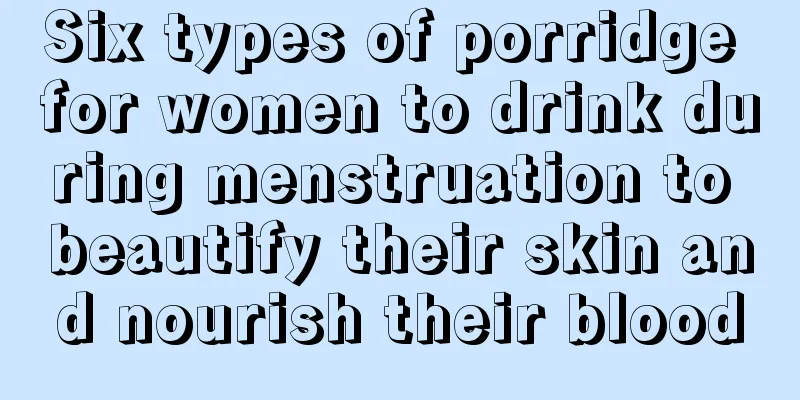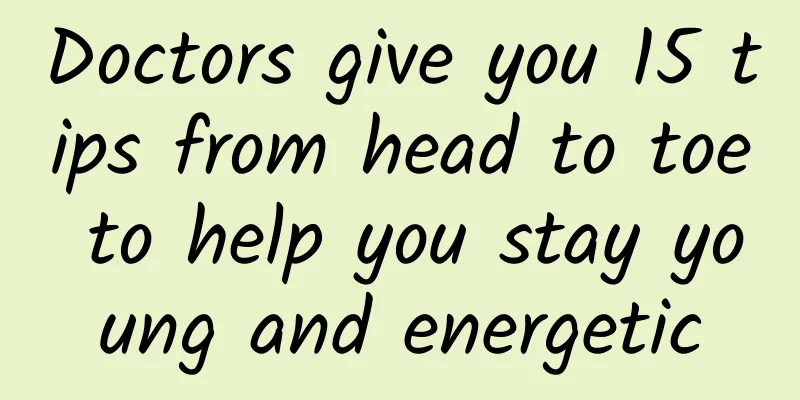How to regulate a woman's poor physical condition

|
Poor physical condition is believed to be a problem that many girls have. Poor physical fitness means poor resistance, and poor resistance means that people are prone to diseases. Therefore, in order to change this phenomenon and improve their immunity, people with poor physical fitness must adjust their physical fitness through certain exercise methods and diet conditioning methods. Below, I will introduce in detail the conditioning methods for girls with poor physical constitution. 1. Heel lift In our daily life, heel lifting is a very simple exercise and can be done anytime and anywhere, such as while waiting for a bus or watching TV. If you persist in doing it for a long time, it can strengthen the muscles of your legs, feet and waist. The specific method is to align your feet and put them together, keep your body upright, then slowly raise your heels until they cannot be raised any further, hold for a few seconds and then slowly lower your heels. If you keep doing this for a long time, it will be very effective. 2. Up and down ladder method If you are unable to go out for a walk due to weather or other reasons, you can make full use of existing materials at home, such as filling a waste cardboard box with books to make small steps and doing stepping exercises. The specific method is to do it up and down within 2 seconds, and continue for 3 minutes. Rest for a while before continuing, and increase the speed and frequency appropriately according to your health condition. You can also exercise by taking the stairs. 3. Hot and cold bath method The specific method is to start with a cold water bath, repeatedly alternate between soaking the body in cold and hot water, and then end with a cold water bath. Hot and cold baths have many functions, one of the main functions is to strengthen the function of arteriovenous anastomosis blood vessels. Repeatedly soaking the body in cold and hot water can stimulate the arteriovenous anastomosis, restore dysfunctional blood vessels to normal, and promote blood circulation throughout the body. After the capillaries and arteriovenous anastomoses stimulate each other, the functions of both can be improved, thereby promoting blood circulation. 4. Dietary conditioning Eat more fruits and vegetables that are light and nourishing, sweet and cool in nature, rich in water and fiber, to promote body fluid production. Especially recommended are spinach, greens, yellow sprouts, pears, bananas, watermelons, tangerines, oranges, grapefruits, strawberries, grapes, sugarcane, mulberries, wolfberries, tomatoes, white fungus, black fungus, various mushrooms, honey and royal jelly. Duck meat, pork, eggs, milk, yogurt, soft-shelled turtle, tortoise meat, scallops, sea cucumber, cuttlefish, and glutinous rice are also good choices. |
<<: What are the hazards of pesticides to pregnant women?
>>: How to treat kidney yin deficiency in girls
Recommend
What causes vulvar redness, swelling, itching and pain?
A very common condition in gynecological clinic i...
Does yellow leucorrhea mean menstruation?
Yellow leucorrhea is a relatively common type of ...
Build six lines of defense and fight the “stomach protection war” well!
Author: Ouyang Jun, Chengdu Qihuang Institute of ...
My period is 3 days late and it hasn't come yet
If you find that your menstruation is delayed for...
Can taking medicine reduce cardiovascular stenosis? 50-year-old patients are exempt from stents! How to choose between drugs and stents
In the middle of the night, an ambulance brought ...
Why does my stomach hurt during late pregnancy?
When pregnant women reach the late stage of pregn...
What causes black menstrual discharge?
Every woman hopes that her menstruation is normal...
What happens to your body if you eat one piece of bread a day? Here’s how to choose “good” bread →
Bread is a must-have for many workers for breakfa...
Unexplained bruises on women
In daily life, many people sometimes experience b...
Are endometrial polyps serious?
The problem of endometrial polyps is detrimental ...
Will you get cold legs if you don't wear long underwear? Why do your joints hurt when it gets cold? You may have been deceived for many years!
As the saying goes, the legs age first. Many elde...
What does it mean when there is no obvious abnormality in the uterine appendages?
There are many problems happening to women nowada...
Can breasts still grow at 25?
Women's breasts usually develop fastest durin...
Can I drink honey water during my period?
For a woman, the most painful moment in her life ...
Is it really bad for pregnant women to eat bananas?
Banana is one of the fruits that most of our read...

![[Health Science] Do a good job of breast screening and protect breast health](/upload/images/67f1826f3b2c2.webp)







